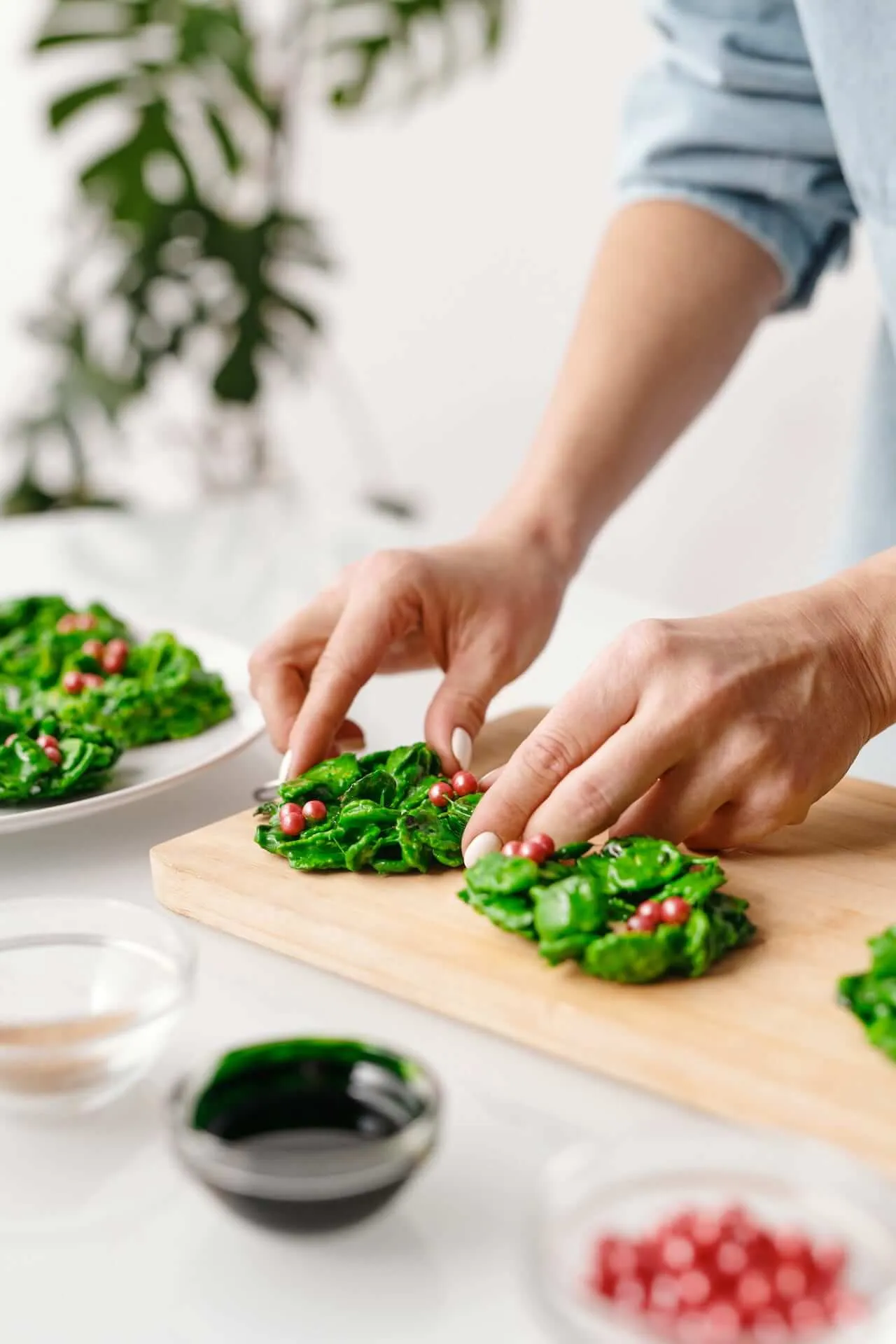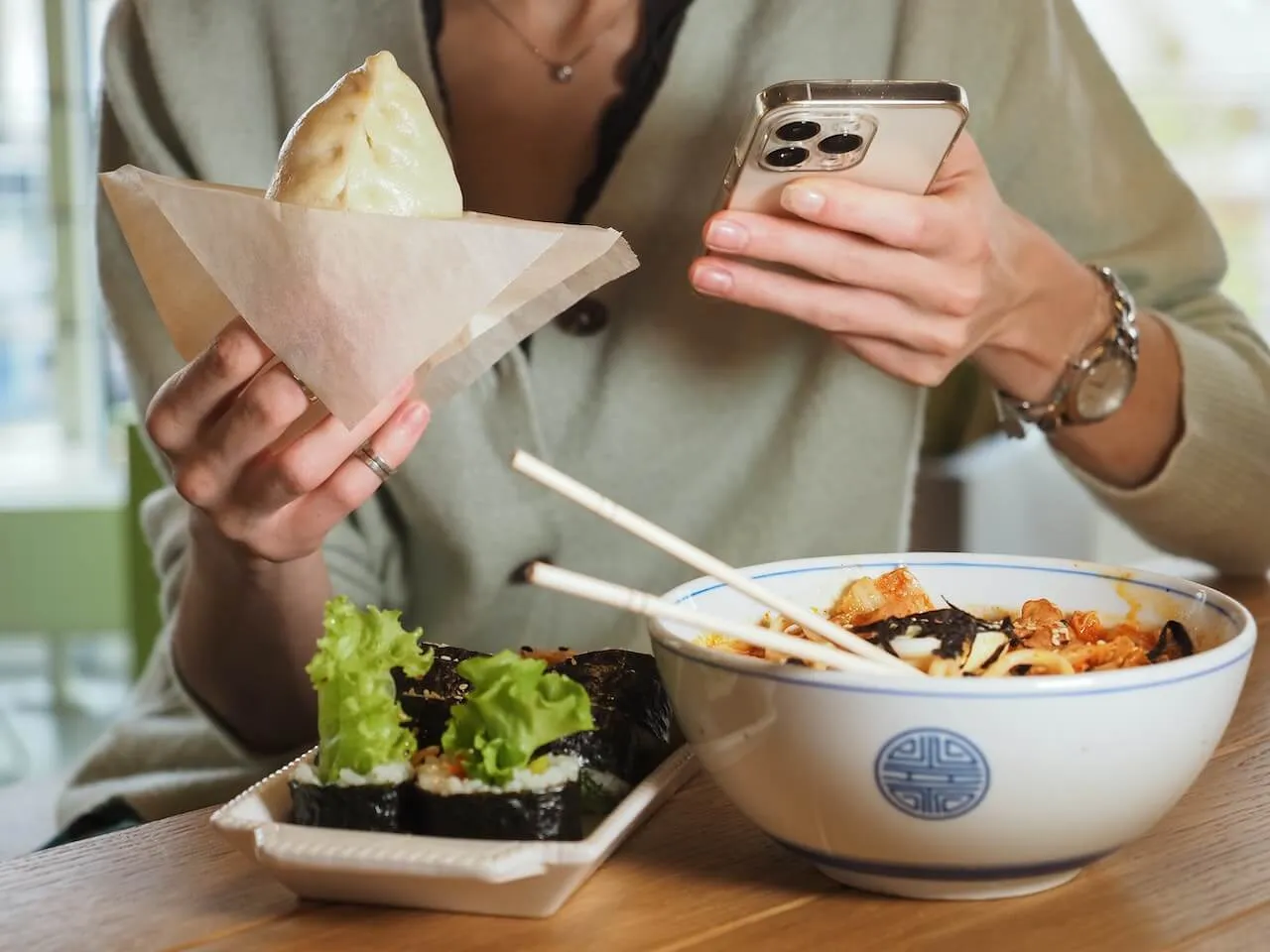Whether you hop from one foot to the other, jumping over emotional landmines that pop up during the holidays, or you revel in the routine-crashing hubbub of end-of-year work deadlines, boozy egg nog, and a cluster of crowded festive events that spread mirth, you probably love or loathe the holidays. Even if you volunteer to dress up as Santa and pass out gingerbread cookies to all the neighbors, the holidays can wreak havoc on your health and stress level.
The weeks between Thanksgiving and New Year’s Day prompt some people to shovel their health goals to the side, eat extra slices of pie, and worry about clean eating and working out in January.
If you need a respite from your usual routine and the holidays seem like the best time to do so, take a break and reset. If you want to cling to your usual schedule but can’t because kids are out of school, family visits take up too much time, or travel puts you out of your comfort zone, take a deep breath. You can find a balance between letting go and setting up some structured routines during this free-for-all time of year. Keep reading to learn how.
Low-Stress Holiday Eating Plan
As many of us get back to socializing, traveling, and spending time with extended family again this holiday season, we have less control over our environments. When we celebrate at home, we determine the dinner menu, what time we go to bed, and whether candy canes and hot cocoa are served every day.
It’s good to learn to go with the flow during the holidays. That party might be open bar and offer all-you-can-eat puff pastry appetizers, your aunt baked her caramel cheesecake, or the weather delay requires grabbing food you didn’t plan to need at the airport.
When you feel out of your element or knocked back one too many drinks, the effort to eat nutrient-dense foods may feel too difficult. The following tips can help.
Give Yourself Permission to Enjoy Food or Drink with No Shame
First things first: Stressing out over sticking to a diet that doesn’t allow you to eat small amounts of what you really want every once in a while won’t help you (or anyone near you… ahem) in the long run.
Our bodies are amazingly resilient. If you’re not diabetic or prediabetic, your body can handle the extra glucose from that cinnamon streusel cake or the glass of champagne. It’s not ideal to go nuts and allow your glucose to spike and crash all day every day, but a little indulgence this time of year is OK.
If you want it, have it, and don’t feel sorry about it. Just don’t overdo it, and if eating this thing or doing that thing causes you to spiral out of control, you may want to address your relationship with the thing.
Read more: How many cheat meals can have you in a week and maintain fitness?
7 Healthy(ish) Holiday Eating Tips
During the holidays when you’re out of your normal routine and may not have access to the low glycemic or plant-based foods or whatever you normally eat, try to take things in stride. Relax, breathe, and allow yourself to take pleasure in a break in your routine.
A great 80/20 or healthy-ish way of eating can get you through to January when you’ll be back in control of your environment, pantry and refrigerator, and meal plans. Until then, our low-stress tips can help:
1. Combine moderate- or high-glycemic carbs with fiber or protein.
Slow down and maybe even mitigate a high glucose spike by eating a mix of spiky carbs with low- or no-spike foods. One study showed a significant reduction in glucose and insulin response<sup>1</sup> when broccoli, a high-fiber veggie, and mashed potatoes were eaten together, compared to when mashed potatoes were eaten alone. Another study showed a smaller rise in glucose<sup>2</sup> when people ate carbs with protein than when participants ate a high-carb meal without protein.
Read more: Glycemic index, glycemic load, and how it impacts your glucose
2. Add fiber-rich foods with resistant starch to your meals when you can.
You already know that fiber helps slow down your glucose response (it also keeps you satisfied and, uh, keeps things moving out of your body). Resistant starches, starch molecules that resist digestion, are carbs whose sugars don’t get absorbed by the small intestine. One study showed the glucose-reducing benefits of eating a muffin top made with resistant starch<sup>3</sup>. It resulted in a 33% reduction in post-meal glucose rise, a 38% decrease in insulin, and an 8% decrease in maximum glucose concentration compared to the control muffin.
Foods that are high in resistant starch include: green bananas, lentils, black beans, chickpeas, seeds, potato starch, as well as cooked and cooled oats, white rice and potatoes. Try overnight oats, black beans added to chili or salad, and lentil soup.
3. Hungry for a snack? Try almonds.
One randomized controlled trial found that almonds did not significantly alter glycemic regulation<sup>4</sup>, metabolic health, or inflammatory markers in overweight or obese adults with elevated fasting blood glucose. Several other studies reference the favorable glucose response<sup>5</sup> to eating almonds, including the depression of postprandial glycemia<sup>6</sup>. Eating a half-ounce of almonds (about 12) before a meal may also lower what would have been a high glucose response<sup>7</sup> in glucose-intolerant individuals.
{{mid-cta}}
4. Vinegar consumption may help reduce the post-meal glucose response.
A review and meta-analysis of clinical trials found that vinegar consumption can reduce glucose and insulin responses<sup>8</sup> after eating in healthy people and those with glucose disorder. Another study showed the positive effects of daily red wine vinegar consumption<sup>9</sup> over two months in healthy adults with high waist circumferences. Data analysis showed significant reductions in fasting glucose and an 8.3% reduction in insulin resistance in the group that consumed red wine vinegar daily. Easy ways to include more vinegar in your diet: Swap ranch dressing for vinaigrette, use vinegar in sauces or simmer it in a pot until it reduces by half and thickens to make a glaze, or add it to marinades and dipping sauces.
<p class="pro-tip">Related reading: Does apple cider vinegar help you lose weight?</p>
5. If you’re gonna eat a burger (with bun), add romaine lettuce to it.
A 2021 study reviewed the metabolic responses in healthy men to a high-fat meal of white bread, hamburgers, cheese, mayo, and butter with either no greens or with the addition of watercress or romaine lettuce. The group who ate romaine lettuce on their burgers saw a delayed and lowered glucose and insulin response<sup>10</sup> compared to the other meals. The glucose-lowering mechanisms the researchers suggested include the higher fiber content of romaine lettuce, its texture, and the plant’s bioactive compounds that may reduce the rate of carb digestion and absorption.
6. Eat a low-glycemic food then wait 10–30 minutes before eating a high-glycemic food.
If you’re gonna eat that thing that is likely to spike your glucose, try eating a low-glycemic food first then hang out for a bit before eating the high-GI food. One small study had healthy, young participants drink either vegetable juice, water, or water with the same amount of sugar as the vegetable juice 30 minutes before eating a little more than a half-cup of cooked rice. The group who drank vegetable juice showed lower blood glucose<sup>11</sup> and insulin plasma levels than the sugar-water group. The same group of researchers saw a similar postprandial lowered glucose response among a different group of healthy individuals who ate a shredded cabbage salad dressed with olive oil, vinegar, and salt 10 minutes before eating a half-cup of cooked rice. Researchers found that the low-GI salad suppressed the rapid increase of glucose<sup>12</sup> after eating the high-glycemic rice.
7. Slow your roll on the alcoholic drinks.
With festive parties, happy hours, and holiday dinners in full swing, there’s nary a dry glass around. This isn’t to say you can’t enjoy and celebrate with friends and loved ones, but try not to overdo it too often. Alcohol can disrupt your sleep<sup>13</sup>—even if you “pass out” as soon as your head hits the pillow, just 2–3 drinks can cause you to wake up early and often during the night. What’s more, drinking with your meal or before eating may encourage you to eat more. One study on men found that just 11 ounces of alcohol (that’s less than a pint of beer) resulted in 30% more calories consumed<sup>14</sup> at the meal.
Read more: How does alcohol impact your blood sugar?
These holiday healthy eating tips provide little reminders of tactics you can include that shouldn’t discourage your enjoyment or disrupt the go-with-the-flow vibe during a time when all of us are out of our normal routines.
If you’ve avoided ultra processed foods, deep-fried tidbits, and opt for nutrient-dense vegetables, fruits, whole grains, lean proteins, and healthy fats more often than not, then you may find that eating a few kid-decorated frosted cookies or chowing down on seconds of grandma’s lasagna with garlic bread doesn’t make you feel so great the next day. Point is: Strike a balance between indulging in things you might not normally eat or drink if you want, but employ some give and take to avoid spiraling into old habits that aren’t supportive of good health.
<p class="pro-tip"><strong>Learn about </strong> <a href="/blog/weather-affect-metabolic-health">how cold weather can affect your blood sugar</a>.</p>
References
- https://pubmed.ncbi.nlm.nih.gov/27655525/
- https://academic.oup.com/ajcn/article-abstract/46/3/474/4694505
- https://www.sciencedirect.com/science/article/pii/S0899900718300145
- https://www.sciencedirect.com/science/article/abs/pii/S2405457718306375
- https://www.nature.com/articles/ejcn2013184?wptouch_preview_theme=enabled
- https://academic.oup.com/jn/article/136/12/2987/4663963?login=true
- https://www.jabfm.org/content/29/6/759.short
- https://www.sciencedirect.com/science/article/abs/pii/S0168822716308518
- https://pubs.rsc.org/en/content/articlelanding/2019/fo/c9fo01082c/unauth
- https://lipidworld.biomedcentral.com/articles/10.1186/s12944-021-01487-9
- https://www.spandidos-publications.com/10.3892/etm.2019.8002
- https://www.spandidos-publications.com/10.3892/etm.2015.2228
- https://www.tandfonline.com/doi/abs/10.1300/J465v26n01_01
- https://www.sciencedirect.com/science/article/abs/pii/S0031938401005984




.svg)










.svg)
.svg)
.svg)
.svg)
.svg)
.svg)
.svg)
